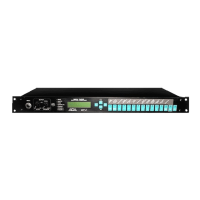Appendix C
Troubleshooting
Some hints to aid in correcting problems.
Problems happen, always at a critical moment when they can least be afforded. Fortunately,
the overwhelming majority of problems are simple in nature and usually involve no more
than finding and correcting some oversight.
Troubleshooting Tips
The difference between quickly fixing a problem and becoming angry and frustrated lies
mostly in the approach taken in troubleshooting. Here are a few rules that can be applied to
any troubleshooting situation:
1) Stay calm!
It is easy to become upset when a problem crops up, especially in a high-pressure situation
such as in the "heat of the battle" onstage, but panic tends to close the mind, making it more
likely that the fault will be overlooked. It may take a lot of effort to remain calm, but this is the
single most important troubleshooting technique.
2) Be methodical. Use the process of elimination to isolate the cause.
Time is frequently wasted in troubleshooting situations by attacking the problem randomly.
The most potent technique for finding the cause of a problem is the process of elimination.
The first thing to try is eliminating everything in the middle of a signal chain and see if the
problem still exists. Use any indicators or meters in the signal chain to help isolate where the
signal exists and where it does not. If you are getting no sound from the MP-2, for example,
try setting all Status parameters to "Out" and disabling the Stereo Volume Control. If there is
still no sound, the problem is either elsewhere or a truly serious one that cannot be dealt with
on the spot (which does happen on occasion). If the problem disappears, you have isolated
the cause as being something to do with the sections you removed. The next step is to add
them back in one at a time, testing as you add each stage. In this way, you will quickly
identify the culprit, allowing you to then focus on that area in the same way and find the
specific cause. This may sound like a procedure too time-consuming for a performance sit-
uation, but, in fact, it can be done very quickly once the process is familiar, and it offers the
best chance of actually finding and correcting the problem.
3) Don't overlook the obvious. Check simple mechanical things first.
When a problem occurs, don't immediately assume it is a complex MIDI mishap or some
other arcane thing; most often it is the simplest possible explanation that is the right one. Did
the unit become unplugged? Is it switched on? Are the connections correct and complete? (It
is easy for a cable to be half-plugged in, which can cause very puzzling behavior.) Is there a
bad cable?
Even once basic mechanical causes have been explored, continue thinking of the simplest
explanation. If the MP-2 is not responding to MIDI, check the channel settings after checking
the cabling connections.
Page: 57

